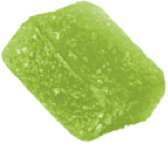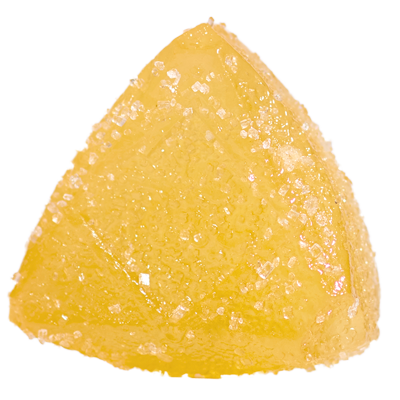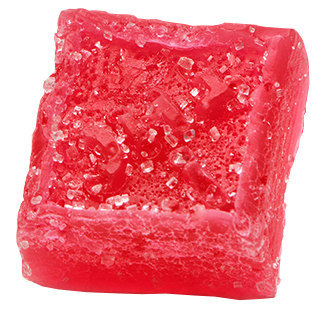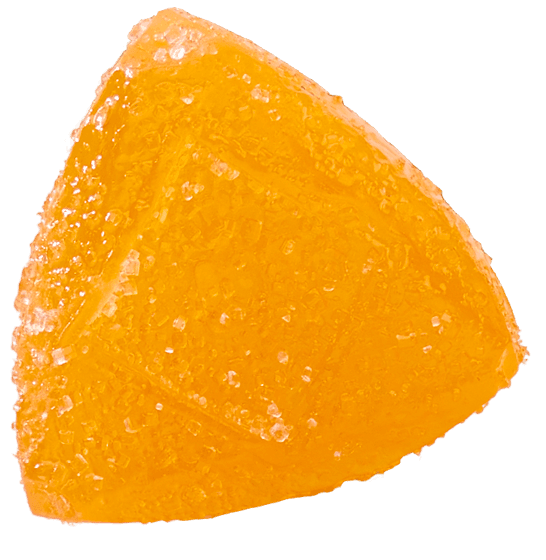WTF is CBG?
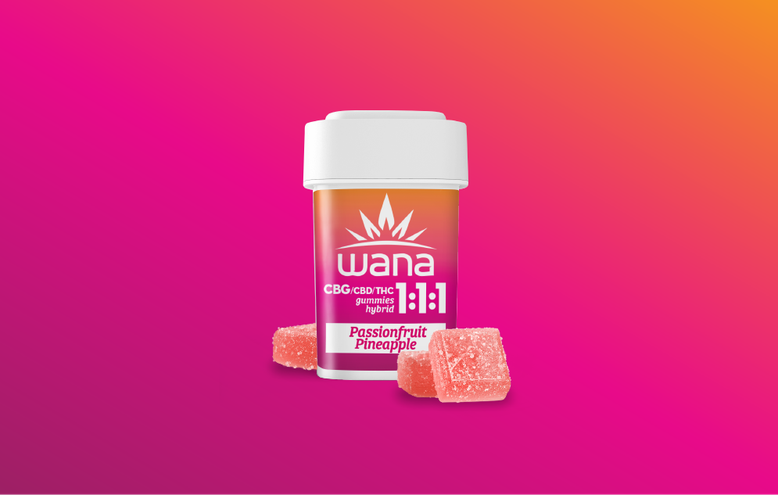
You’ve heard of THC, the active ingredient in many cannabis products. You’ve heard of CBD, its non-intoxicating cousin. But you may be less familiar with another, up-and-coming cannabinoid known as cannabigerol (or CBG).
Since CBG seems to be a rising star in the weed world – and justifiably so, given its promising wellness benefits – it’s worth getting to know how it works. Here’s a simple guide to CBG’s effects, how it interacts with other cannabinoids, and how you can try it for yourself.
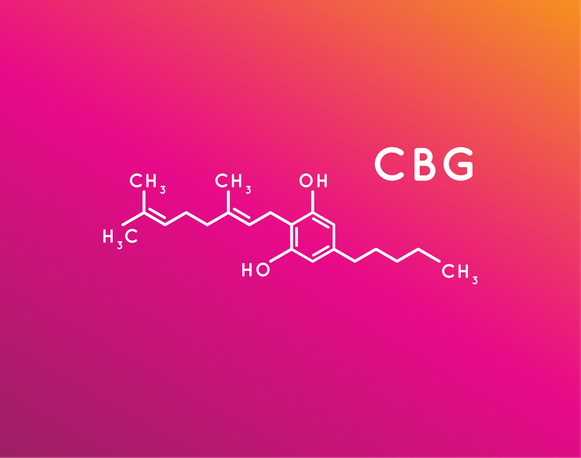
What is CBG?
On a scientific level, CBG is one of more than 100 rare cannabinoids found in the cannabis plant. It’s sometimes called “the mother” of all cannabinoids, because its acidic form converts to both THC and CBG as the plant ages.
What does CBG do?
Consumed on its own, cannabigerol won’t get you stoned. But early research suggests a host of CBG benefits, including relief from pain and inflammation, analgesic (anti-anxiety) effects, and even some anti-bacterial properties (Ref 1, 2).
There’s also compelling evidence that CBG elevates your body’s levels of GABA, a calming neurotransmitter associated with feelings of relaxation and contentment (Ref 3).
CBD vs. CBG
CBD and CBG are both non-intoxicating (meaning they won’t get you high). They’re also both associated with some of the most sought-after benefits of marijuana – or cannabis, as we prefer to call it – including reduced inflammation, relief from stress, better mood, and more (Ref 1).
Unfortunately, there’s so far been minimal research on the differences between the two. As far as we know now, there are only a couple of big ones:
- CBG seems to elevate GABA in the brain (see previous section), while CBD does not.
- We simply know a lot more about CBD than we do about CBG. The latter is pretty new to the public consciousness, and the research has yet to catch up.
That said, it’s really not fair to pit CBD and CBG against each other. As we’ll see shortly, the more pertinent question isn’t, “How are CBD and CBG different?” It’s, “How do they work together?”

CBG and Your Endocannabinoid System
The reason CBG, CBD and even THC can make a great power throuple comes down to what’s known as your endocannabinoid system (ECS).
Your endocannabinoid system is a complicated network of receptors and transmitters that helps to regulate things like appetite, mood, sleep cycles, and a lot more (Ref 4, 5). Cannabinoids, which can be produced by the cannabis plant but also by your own body, interact with these receptors to send signals to your brain. For example, “It’s time for a snack,” or, “Let’s take a nap,” or, “Yes, we’re aware we worked out too hard, those back pain signals can ease up a little.”
Different cannabinoids interact with different receptors in different ways. If your back aches, THC might stimulate a part of your ECS called the CB1 receptor, helping the muscles relax. Meanwhile, CBD and CBG interact with another group of receptors (known as CB2), which are believed to regulate inflammation. In other words, you’re attacking two sides of the problem at once.
Cannabinoids can also interact in varying ways with the same receptor, like pressing down on different frets of the same guitar string. For example, CBD can modulate the way THC binds to your CB1 receptor, reducing the potential for negative THC side effects like paranoia. Meanwhile, CBD and CBG both partially bind to receptors associated with pain signals, inflammation, and anxiety (Ref 1). When you consume them together, they work synergistically to increase stimulation of these important receptors – and all the natural wellness benefits that come along.
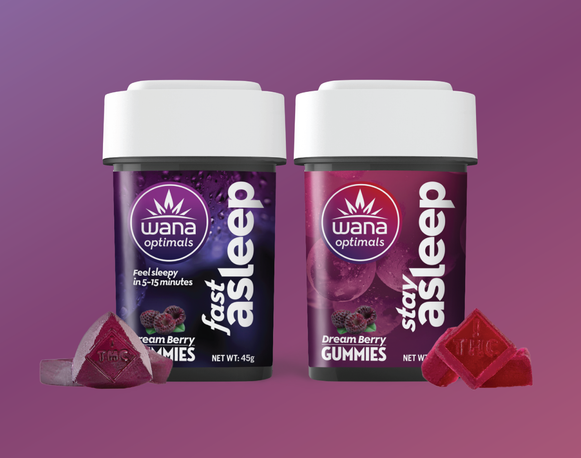
Where Can You Find CBG Products?
CBG still isn’t as prevalent as CBD and THC, but you’ll likely find it in a few places at your favorite dispensary. There are CBG oils, CBG edibles, and even high-CBG strains of flower.
Speaking of edibles: after years of R&D, Wana Brands has recently launched not one, not two, but three CBG-powered gummies.
The first two, which you may already be familiar with, are Wana’s best-selling Fast and Stay Asleep Optimals formulations.
Powered by a calibrated cannabinoid-terpene blend,* they harness CBG to address the two most common causes of sleeplessness: stress and physical discomfort (Ref 6, 7). Fast Asleep is powered by fast-acting technology to make you sleepy in 5-15 minutes, while Stay Asleep is formulated to keep you snoozing all night long.

The next is Wana’s newest Optimals formulation: Quick Calm Gummies. In addition to 10mg of CBG, each serving contains 10mg of CBD (also known for its anxiety-regulating properties), a low 1mg dose of THC (enough to unlock the full benefits of CBG and CBD without drastically impairing cognition), 50mg of L-Theanine (a soothing amino acid found in green tea), and more than 30 other calming plant compounds.* These “Bliss Berry” Gummies are meant to be taken for rapid relief at the onset of anxious feelings, no matter where you are or what you’re doing.
And finally, Wana recently launched a new addition to our existing lineup of CBD/THC ratio products: 1:1:1 Passionfruit Pineapple Gummies, which contain 10mg each of CBG, CBD, and THC. Even more recently, we released Wana Quick 1:1:1: Margarita Gummies. These fast-acting 5mg servings work in just 5-15 minute, and they deliver the same lighter Delta-9 "head high" you've come to expect from Wana Quick.
While CBD and CBG have a lot of potential for aiding with things like sports recovery and stress relief, early feedback from consumers and budtenders suggests that Wana’s addition of THC to these formulations also creates a relaxing-but-inspiring high that’s good for getting creative or spending time with friends. Click the button below to find out if these uniquely euphoric gummies are available in you're state... we're rolling them out as fast as we can!
What’s next for CBG?
There’s a lot left to learn about this promising little cannabinoid – and Wana is committed to investing all the research and innovation necessary to unlock its full potential. Sign up for our newsletter to keep up with new cannabinoid info AND new CBG products. We've only scratched the surface.
*Precise formulations may very by state.
Citations
1. Russo, E. B., & Marcu, J. (2017). Cannabis Pharmacology: The Usual Suspects and a Few Promising Leads. Advances in pharmacology (San Diego, Calif.), 80, 67–134. https://doi.org/10.1016/bs.apha.2017.03.004
2. Cascio, M. G., Gauson, L. A., Stevenson, L. A., Ross, R. A., & Pertwee, R. G. (2010). Evidence that the plant cannabinoid cannabigerol is a highly potent alpha2-adrenoceptor agonist and moderately potent 5HT1A receptor antagonist. British journal of pharmacology, 159(1), 129–141. https://doi.org/10.1111/j.1476-5381.2009.00515.x
3. Banerjee, S. P., Snyder, S. H., & Mechoulam, R. (1975). Cannabinoids: influence on neurotransmitter uptake in rat brain synaptosomes. The Journal of pharmacology and experimental therapeutics, 194(1), 74–81.
4. Mechoulam, R., & Parker, L. A. (2013). The endocannabinoid system and the brain. Annual review of psychology, 64, 21–47. https://doi.org/10.1146/annurev-psych-113011-143739
5. Aizpurua-Olaizola, O., Elezgarai, I., Rico-Barrio, I., Zarandona, I., Etxebarria, N., & Usobiaga, A. (2017). Targeting the endocannabinoid system: future therapeutic strategies. Drug discovery today, 22(1), 105–110. https://doi.org/10.1016/j.drudis.2016.08.005
6. Finan, P. H., & Smith, M. T. (2013). The comorbidity of insomnia, chronic pain, and depression: dopamine as a putative mechanism. Sleep medicine reviews, 17(3), 173–183. https://doi.org/10.1016/j.smrv.2012.03.003
7. Arroll B, Fernando A 3rd, Falloon K, Goodyear-Smith F, Samaranayake C, Warman G. Prevalence of causes of insomnia in primary care: a cross-sectional study. Br J Gen Pract. 2012 Feb;62(595):e99-103. doi: 10.3399/bjgp12X625157. PMID: 22520782; PMCID: PMC3268500.
Find a Store

